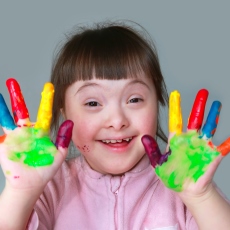
- BABY ARE YOU DOWN DOWN DOWN DOWN DOWN DOWN DOWN DOWN SKIN
- BABY ARE YOU DOWN DOWN DOWN DOWN DOWN DOWN DOWN DOWN PROFESSIONAL
Amniocentesis: At 14–18 weeks, a doctor may insert a needle into the abdomen to obtain a small amount of amniotic fluid for analysis.

BABY ARE YOU DOWN DOWN DOWN DOWN DOWN DOWN DOWN DOWN PROFESSIONAL
Diagnostic testsĭiagnostic tests are more accurate at detecting Down syndrome.Ī healthcare professional will usually perform such tests inside the uterus. Screening is a cost effective and less invasive way to determine whether doctors may need to order further diagnostic testing. Screening tests cannot confirm whether Down syndrome is present.


Screening testsĭue to the increased chances of having a child with Down syndrome, people aged 30–35 or older might receive genetic screenings during pregnancy. Prenatal screens can estimate the probability of a person having a baby with Down syndrome and justify further tests, but they do not diagnose Down syndrome.ĭiagnostic tests can definitively tell whether a fetus will have the condition and identify certain abnormalities. There are two categories of screening tests that doctors can perform. People with a higher chance of having a child with Down syndrome might receive screening and diagnostic tests. There seems to be a lower risk of hardening in the arteries, diabetic retinopathy, and most kinds of cancer. About 40–60% of all people with Down syndrome have a congenital heart defect.Ĭhildren with Down syndrome are also more likely to develop some infections, such as: Sometimes, general health problems can affect any organ system or bodily function. With engagement and regular therapy, most people with Down syndrome can attend school and become active members of the community. People with Down syndrome may also experience: With this said, people with Down syndrome eventually meet many of these milestones. These skills can take time to develop after the child acquires gross motor skills, which involve movement of the whole body.ĭevelopment of speaking and grasping a language may also take longer than expected. There may also be a delay in coordination and fine motor skills (movements using small muscles in the hands and wrists). They may be slow to sit, turn over, and stand.

These differ from what is seen in typically developing children and children with other causes of intellectual disability.Ĭhildren with Down syndrome often reach developmental milestones a little later than their peers. A person with Down syndrome has a specific pattern of cognitive and behavioral features. People with Down syndrome also experience learning difficulties that lead to developmental delays. However, cognitive development and intellectual ability are highly variable. People with Down syndrome usually have cognitive development profiles that suggest mild to moderate intellectual disability.
BABY ARE YOU DOWN DOWN DOWN DOWN DOWN DOWN DOWN DOWN SKIN
skin folds on the inner corner of the upper eyelid.Some common physical characteristics of Down syndrome can include: Individuals with Down syndrome commonly have distinct physical features, unique health issues, and changes in cognitive development.


 0 kommentar(er)
0 kommentar(er)
